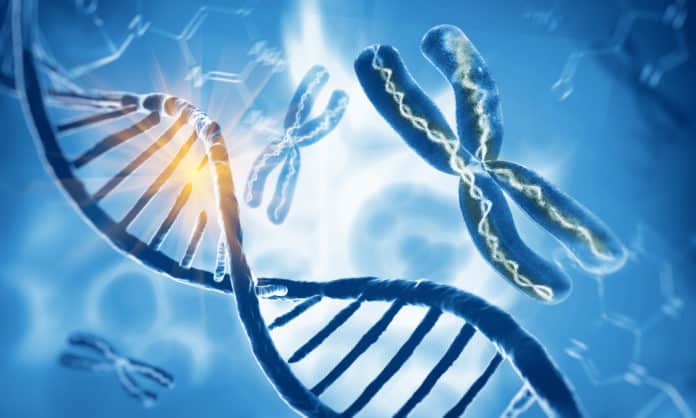Mystery Behind How & When DNA Replicates Decoded
An age-old puzzled on how DNA and its associated material replicate at regular intervals have been unraveled by a group of researchers at the Florida State University. This paves the pay for the next level of future genetic study.
The process of DNA replication was first identified in the late 1950s. It is an essential cellular process for all living organisms. It controls everything starting from hair & color to how our body cells react to any disease or infections. But to date researchers all across have not been able to decode the mystery on how this complicated process is governed in our body cells.
In a paper published in the cell journal, with authors, namely David Gilbert, Distinguished Professor of Molecular Biology, and Jiao Sima a doctoral student stated that there are specific crucial points along the molecule of DNA that control the process of replication.
“It’s been quite a mystery,” Gilbert said. “Replication seemed resilient to everything we tried to do to perturb it. We’ve described it in detail, shown it changes in different cell types and that it is disrupted in disease. But until now, we couldn’t find that final piece, the control
elements or the DNA sequences that control it.”Fellow worker Sima was working with Gilbert and ran close to a 100 hereditary mutations on DNA molecules in a hope to find an explanation of how the DNA replication process actually works. In frustration, Gilbert said they developed a”hail Mary” attempt.
Using the highest possible 3D resolution, they examined a single segment of DNA and noticed three sequences along the DNA molecule touching each other frequently. With the help of CRISPR, they made an attempt to remove these areas. Upon removal of this sequence, the sections replication time from the beginning was shifted to the end. Also, the 3D structure of the DNA molecule got altered radically.
“This was one of those moments where just one result knocks your socks off.” Gilbert Said.
“We have for the first time pinpointed specific DNA sequences in the genome that regulate chromatin structure and replication timing,” Sims said. “These results reflect one possible model of how DNA folds within cells and how these folding patterns can impact the hereditary substances’ function.”
This breakthrough discovery paves ways for new exploration & research in genetics. It changes the way we have been looking into the genetic information & cellular function till now. The knowledge of how DNA replication timing can be altered can be used to treat various rare diseases.
This study was supported by the National Institutes of Health. Various other scientists also assisted the team in this research study. Researchers from La Jolla Institute for Allergy and Immunology, the Babraham Institute, the University of Michigan, the Gladstone Institute of Cardiovascular Disease and Roddenberry Center for Stem Cell Biology and Medicine, University of California San Francisco and Charité Universitätsmedizin Berlin also played a crucial role.






























